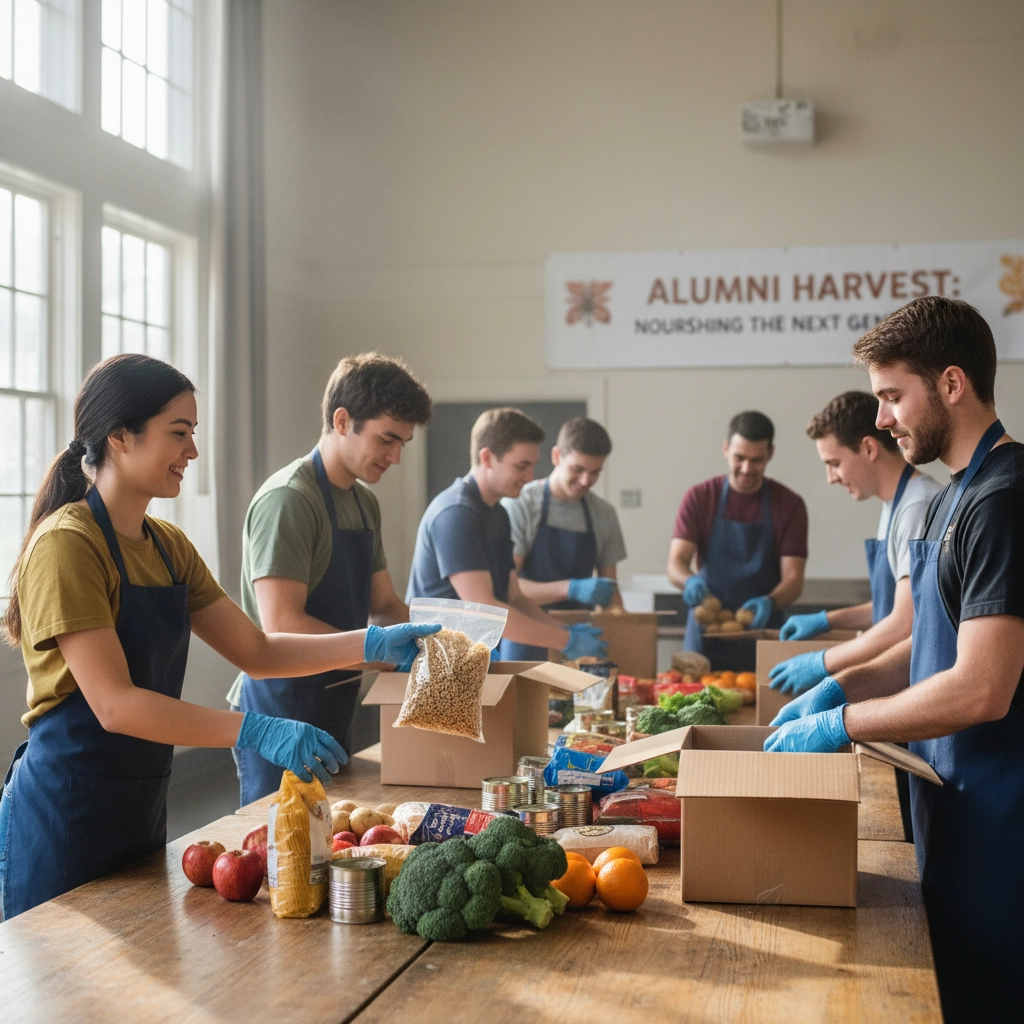Community Empowerment Programs vs Traditional Scholarships: Which Tackles Student Food Insecurity Better?
- Tori Poullard
- 7 days ago
- 5 min read
As Thanksgiving approaches and campus dining halls prepare to close for the holidays, thousands of Atlanta college students face a harsh reality: where will their next meal come from? While families across the country gather around abundant tables, nearly 40% of college students nationwide experience food insecurity: a number that spikes dramatically during holiday breaks when campus resources disappear.
This Thanksgiving season forces us to examine a critical question: Are we truly addressing student hunger, or just treating symptoms? The answer lies in understanding how different support systems tackle this challenge and which approach creates lasting change in our communities.
The Holiday Reality: When Campus Support Systems Close
Holiday campus closures create perfect storms of food insecurity. Students who depend on dining hall meal plans, campus food pantries, and work-study positions suddenly lose their primary sources of nutrition and income. For many Atlanta students, Thanksgiving break means choosing between a bus ticket home and groceries for the week.
Traditional financial aid assumes students have stable support networks to fall back on during breaks. But for the growing number of first-generation college students, aging-out foster youth, and those from food-insecure households, holidays amplify rather than alleviate basic needs challenges.

Research shows that between 20-50% of college students experience food insecurity, with rates significantly higher among low-income and minority students at community colleges. During holiday periods, these numbers climb as students lose access to campus resources while facing increased transportation costs and reduced work opportunities.
Community Empowerment Programs: The Holistic Approach
Community empowerment programs like United Foundation Group's food drives represent a fundamentally different philosophy. Rather than providing generic financial assistance, these programs address specific barriers with targeted resources and wraparound support.
How Community Programs Work
Immediate Resource Provision: Programs directly supply food, removing the burden of choice from already-stretched students. Instead of receiving money they must allocate between rent, tuition, and groceries, students receive actual meals and groceries.
Community Partnership: By partnering with local food banks, restaurants, and community organizations, these programs leverage existing resources and create sustainable support networks. Houston Community College's pioneering food scholarship program, for example, provides participating students with 60 pounds of produce, meat, and nonperishable foods twice monthly through partnerships with the Houston Food Bank.
Dignity-Centered Distribution: Rather than traditional charity models, many programs style their distribution as farmers markets or community gatherings, preserving student dignity while building connections.
Holistic Support Systems: Community programs often address multiple barriers simultaneously: providing not just food, but also mentorship, networking opportunities, and pathways to future leadership roles.

The Legacy-Building Component
What sets community empowerment programs apart is their focus on creating lasting change. Students who receive support often return as volunteers, donors, and program leaders, creating cycles of community investment. This Thanksgiving season, many UFG food drive recipients from previous years are now helping pack boxes for current students: a powerful demonstration of how temporary assistance transforms into permanent community strengthening.
Traditional Scholarships: The Financial Aid Model
Traditional scholarship programs operate on the principle that financial resources solve financial problems. By providing unrestricted funds, scholarships theoretically allow students to address any need, including food insecurity.
Strengths of Traditional Scholarships
Flexibility: Students can allocate funds based on their most pressing needs, whether that's rent, textbooks, or groceries.
Established Systems: Scholarship programs operate through well-established financial aid offices with existing infrastructure and processes.
Broader Impact: General scholarships can address multiple financial barriers simultaneously, from tuition to living expenses.
Long-term Financial Relief: Multi-year scholarships provide predictable support that helps students plan their education financing.
Limitations in Addressing Food Insecurity
Resource Competition: When students receive general financial aid, they must choose how to allocate limited funds among competing needs. Research shows students often sacrifice food to pay for housing or tuition, viewing hunger as more tolerable than homelessness or academic failure.
Timing Mismatches: Traditional scholarships often disburse at semester beginnings, leaving students vulnerable during mid-semester financial crunches or holiday breaks.
Lack of Specific Focus: General scholarships don't specifically target the food insecurity barrier, meaning students may receive aid but continue to experience hunger.

The Evidence: Which Approach Works Better?
Research increasingly supports targeted interventions for addressing specific barriers like food insecurity. Studies of Houston Community College's food scholarship program show that students receiving direct food assistance demonstrate improved retention rates, better academic performance, and higher course completion rates compared to those receiving equivalent general financial aid.
The academic impact is significant: food-secure students show improved memory, better ability to focus on schoolwork, and increased motivation to succeed. These benefits are particularly pronounced for Latino and African American students, who experience food insecurity at disproportionate rates.
Impact During Holiday Periods
Community programs show particular effectiveness during holiday breaks. While traditional financial aid may help students pay for spring semester, it doesn't address the immediate hunger they face when campus dining halls close in November. Community programs bridge this gap by providing holiday meal boxes, maintaining food pantries during breaks, and connecting students with community resources that operate year-round.
A Thanksgiving Comparison: Two Students, Two Approaches
Consider Maria, a first-year nursing student at an Atlanta community college. Under the traditional scholarship model, she receives $2,000 per semester in general aid. When Thanksgiving break arrives, she faces a choice: use her remaining aid money for groceries or save it for spring semester textbooks. She chooses textbooks and spends the break hungry.
Now consider James, who participates in a community empowerment program. He receives the same $2,000 in aid, but also gets bi-weekly food boxes, holiday meal vouchers, and connection to a mentor in his field. When Thanksgiving arrives, he volunteers at the program's community dinner, helping serve other students while building professional networks.
Both students received equivalent financial value, but James experienced food security, community connection, and leadership development opportunities that Maria missed.

The Power of Gratitude and Community Building
This Thanksgiving season highlights what community empowerment programs understand: addressing hunger requires more than calories. It requires dignity, connection, and hope. When students gather at community Thanksgiving dinners sponsored by programs like UFG, they're not just receiving meals: they're experiencing belonging.
Traditional scholarships, while valuable, can't replicate this community-building aspect. A check provides resources; a community provides resilience.
Building Legacy Through Togetherness
The most powerful aspect of community empowerment programs is their ability to transform recipients into leaders. Students who receive support during their most vulnerable moments often become the most committed advocates for others facing similar challenges.
This creates what researchers call "pay-it-forward" cycles, where temporary assistance transforms into permanent community investment. Traditional scholarships, focused on individual achievement, rarely generate this kind of collective impact.

The Verdict: Integration Over Competition
The evidence suggests that community empowerment programs tackle student food insecurity more effectively than traditional scholarships alone. However, the most powerful approach integrates both strategies:
Traditional scholarships should continue providing general financial support for tuition, housing, and educational expenses.
Community empowerment programs should provide targeted interventions for specific barriers like food insecurity, while building the community connections and leadership opportunities that create lasting change.
This Thanksgiving: A Call to Grateful Action
As we gather around our own tables this Thanksgiving, we have the opportunity to ensure that every student in our community experiences the same abundance. Community empowerment programs work because they recognize that addressing hunger requires more than money: it requires community.
The question isn't whether we can afford to invest in comprehensive student support. The question is whether we can afford not to. When we build programs that address immediate needs while fostering long-term community leadership, we create legacies that extend far beyond any single semester or student.
This holiday season, let's choose gratitude in action. Let's choose community over charity. And let's choose approaches that don't just feed students today, but empower them to feed others tomorrow.
Ready to make a difference? Learn more about United Foundation Group's community empowerment initiatives and discover how you can help build lasting solutions to student food insecurity at unitedfoundation.info.
Comments